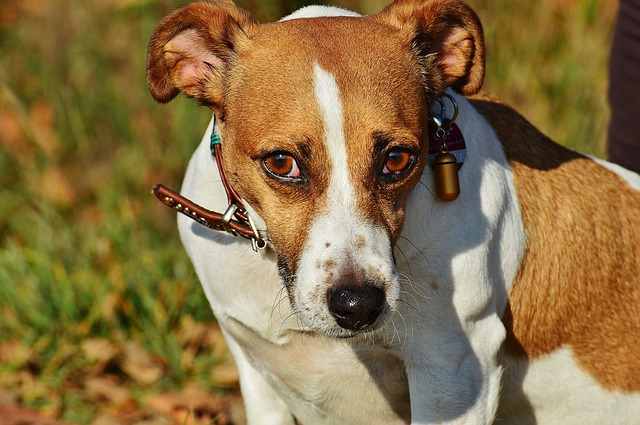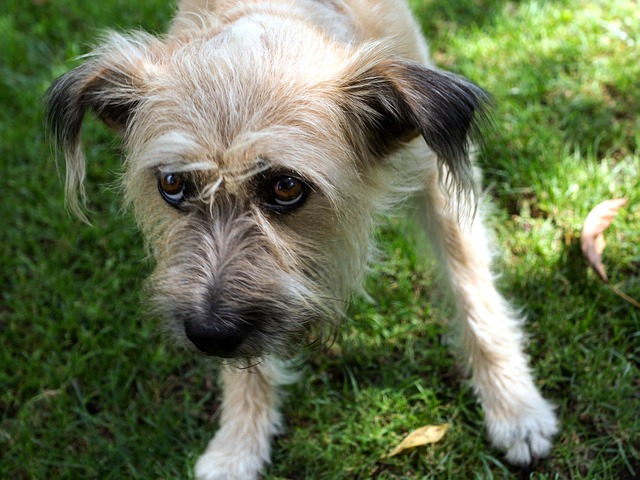If asked to name all the parasites that could affect your dog, how many could you name? There is actually a pretty wide variety of parasites that can affect dogs. They all have varying effects on dogs from just uncomfortable itchiness all the way up to death.
With most parasites, an ounce of prevention is worth a pound of the cure. If you understand the risks associated with varying types of parasites, it may encourage you to remember to keep up with your dog’s various parasite-prevention routines. Here are the 5 major parasite categories, ranging from internal to external parasites, along with symptoms, treatment, and prevention information.

#1 – Heartworms
Infected mosquitoes inject the heartworm parasite larvae into your dog when they bite. The worm makes its way to your dog’s heart, where it can grow to an impressive foot in length. As the worm grows, it impedes blood flow. It requires the heart to work harder to pump blood throughout your dog’s body. Eventually, a dog infected with heartworm may start to have a persistent cough, become tired easily after exercising, and lose their appetite. A heartworm infestation can lead to heart failure since the heart has to work too hard to pump blood around the invading parasite.
Usually, heartworm disease is detected via routine testing before the dog displays any symptoms. Treating a dog that already has heartworms can be expensive, dangerous, and may require surgery. Preventing heartworm is significantly easier and cheaper than treating it, with monthly tablets, chewables, or topical treatments available.

#2 – Ticks, Fleas, Lice, and Mites
External parasites may not be deadly, but they can cause a wide variety of problems for your dog.
Ticks
Ticks can carry a wide variety of serious diseases, including Lyme disease, Ehrlichiosis, and Rocky Mountain Spotted Fever. If you live in an area with a large tick population, a monthly flea and tick preventative is highly recommended. You should frequently check your dog for ticks and remove them as soon as you notice them. You’ll need to use tweezers to carefully grab the tick’s head – not the body – and pull it straight out. Leaving any part of the head in your dog’s skin can cause an infection. After you pull a tick out of your dog, kill it by drowning it in rubbing alcohol.
Fleas
Fleas can make dogs miserable. While some dogs don’t seem to be bothered by flea bites, other dogs are hypersensitive, and even one flea bite will cause a dog to scratch and chew himself bald. Fleas like to hang out around a dog’s ears, tail, and groin.
You may not see the fleas themselves running around on your dog’s skin, but you’ll notice “flea dirt,” which is the excrement from blood-drinking fleas. If you see what appears to be pepper flakes on your dog, put some of the flakes on a paper towel and get them damp. Flea dirt will turn red and appear to bleed. This will mean that your dog has fleas and needs to be treated. Any bedding, carpet, or furniture that your flea-infested dog comes in contact with should be treated as well. Using a monthly preventative is much easier than trying to rid your home of fleas after the fact.
Lice
Smaller and slower-moving than fleas, but they can make your dog just as miserable and are just as easily transferred between dogs. Lice are so small that they usually look like dirt clinging to your dog’s skin or fur, but no amount of rinsing will rinse them away. They can be difficult to treat, as they seem to be more resistant than fleas. It’s easier to prevent them with a monthly topical treatment that specifically mentions that it prevents lice as well as fleas and ticks.
Mites
Smaller than lice and live naturally on most dogs without causing any problems. Sometimes a healthy mite population can reproduce excessively and cause problems for your dog. Mites are responsible for two different hair loss and skin conditions in dogs: demodectic mange and sarcoptic mange. Mites can also burrow under your dog’s skin and cause scabies. Skin scrapings done by your vet will determine what kind of mites are causing problems for your dog and how best to treat the problem.

#3 – Intestinal Worms
Intestinal worms live in your dog’s gastrointestinal tract and feed off his blood, causing a range of symptoms depending on the type of worm plaguing your dog. Puppies are most at risk from worms and succumb more easily to the problems caused by them. Most monthly heartworm treatments also prevent intestinal worms – a little bit of prevention can help your dog avoid a lot of gastrointestinal misery.
Hookworms
Larvae live in soil and may be ingested by dogs eating dirt or by puppies drinking the milk of an infected mother. Diarrhea and weight loss are common symptoms of hookworms, and puppies are more susceptible to suffering from side effects caused by the loss of blood that is feeding parasites.
Roundworms
These look like thick, white pieces of spaghetti and usually range in length from 1-3″. Humans can contract roundworms. It’s important to always be careful when cleaning up after your dog. Symptoms of a roundworm infestation include coughing, vomiting, diarrhea, and malnourishment.
Tapeworms
Typically spread via fleas, tapeworms will shed segments that look like grains of rice in your dog’s feces or clinging to his butt after pooping. Symptoms of a tapeworm infection include diarrhea and weight loss. Luckily, once diagnosed, they are easily treatable.
Whipworms
Whipworms look like a very tiny piece of thread and are difficult to spot in a stool sample. The most recognizable symptoms of a whipworm infestation will be a mucous covering on feces, especially on the tip. Weight loss is another common symptom of whipworms.

#4 – Protozoa
Protozoa are one-celled organisms, different from bacteria and viruses, that are frequently found in contaminated water, soil, and feces and can make your dog quite sick. Coccidia and giardia are common protozoa that cause problems for dogs. Dogs can carry protozoa for quite a while without showing any symptoms until other factors lower your dog’s immune system, at which point diarrhea is a common symptom.
#5 – Ringworm
Ringworm isn’t actually a worm – it’s a fungus that can cause ring-shaped areas of bald spots, red spots, and scabs on infected dogs. Puppies and older dogs with compromised immune systems are more susceptible to ringworm. Symptoms include lesions on the dog’s head, ears, paws, and front legs.
 Toledo, United States.
Toledo, United States.
